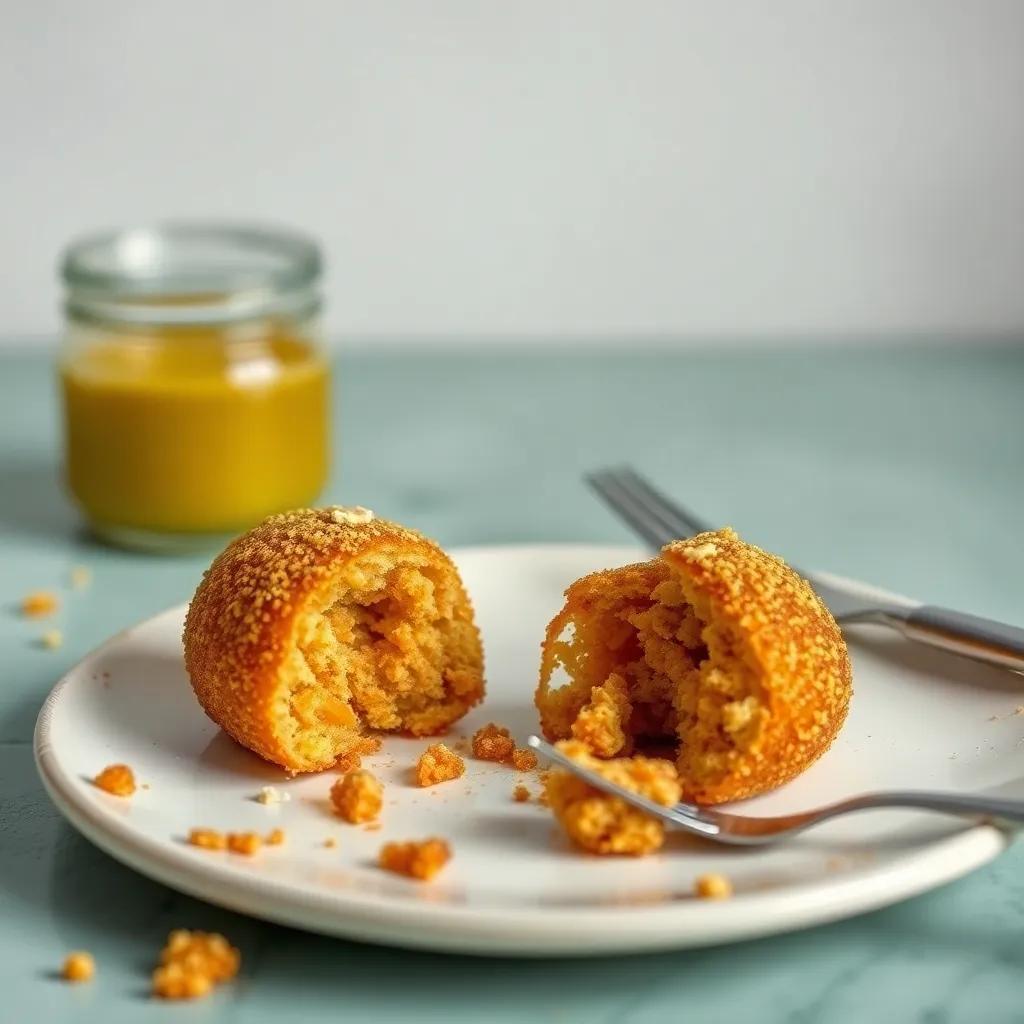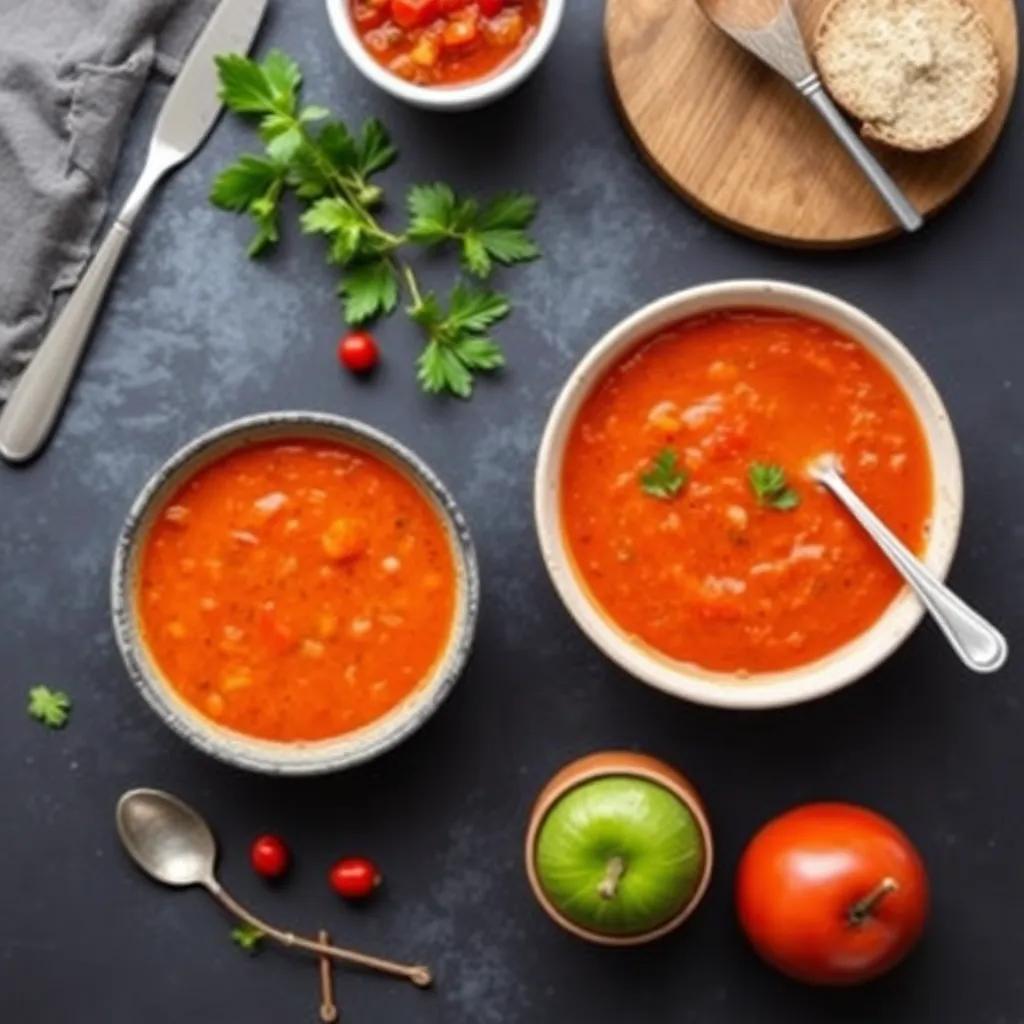Discover Authentic Fabada Asturiana: Spain’s Hearty Bean Stew Recipe

Discover Authentic Fabada Asturiana: Spain’s Hearty Bean Stew Recipe
🌍 Cuisine: Spanish
⚙️ Difficulty: Medium
Ingredients
Nutrition Facts
550 kcal
Instructions
- Soak the dried fabes overnight in plenty of cold water.
- The next day, drain and rinse the beans. Place them in a large heavy-bottomed pot.
- Add cold water to cover the beans by about 2 inches, then bring to a gentle boil over medium heat.
- Skim off any foam that rises to the surface during boiling to keep the broth clear.
- Add the chorizo, morcilla, and pancetta whole to the pot, along with the bay leaves.
- Lower the heat to a gentle simmer and cook partially covered for around 2 hours, occasionally skimming foam and stirring carefully.
- Meanwhile, heat a bit of olive oil in a small pan over medium heat; sauté the finely chopped onion and minced garlic until golden and soft.
- Add the sautéed onion and garlic mixture to the beans.
- Stir in the sweet paprika and saffron threads (if using), ensuring they mix evenly throughout the stew.
- Continue to simmer gently for another 30 minutes or until beans are tender and the stewed meats are infused with flavor.
- Season with salt to taste, being careful as the sausages can be salty already.
- Remove the sausages and pancetta from the pot; slice the sausages and return to the stew, discarding any rind or casing you prefer.
- If the stew is too thick, add a little hot water to adjust the consistency to your liking.
- Let the fabada rest for 10-15 minutes before serving to let the flavors meld together.
- Serve hot, ideally with crusty bread and a glass of Spanish cider or red wine.
Serving Suggestions
- Serve Fabada Asturiana with crusty rustic bread to soak up the rich broth.
- Pair the stew with a traditional Spanish dry cider (sidra) for an authentic experience.
- Accompany with a simple green salad dressed with olive oil and vinegar to balance the richness.
- Top with freshly chopped flat-leaf parsley for a fresh burst of color and flavor.
- Serve alongside roasted red peppers or piquillo peppers for a sweet smoky contrast.
- Use leftover fabada as a filling for empanadas or to flavor rice dishes.
- Enjoy with a glass of Rioja or Tempranillo red wine to complement the smoky sausage flavors.
Table of Contents
- Intro
- Ingredient Notes
- Tips & Variations
- Leftovers & Storage
- Behind the Recipe
- FAQ
- Your Turn in the Kitchen

Intro
Warm, comforting, and steeped in tradition, Fabada Asturiana is more than just a stew—it’s a soulful expression of northern Spain’s culinary heart. Perfect for crisp autumn evenings, family gatherings, or any time you crave a richly satisfying meal, this dish invites you to slow down and savor deep, layered flavors developed through patient simmering. While it may take some time to prepare, the process is wonderfully simple and rewarding, making it an exciting weekend project for both seasoned cooks and adventurous home chefs alike.
What makes Fabada so captivating is its ability to transform humble ingredients into something indulgently decadent without overwhelming complexity. It’s an embrace of rustic charm—meaty, smoky, and deeply hearty—offering a taste experience that feels both old-world authentic and timelessly inviting. Whether you’re looking to explore Spanish cuisine beyond the familiar tapas or simply want a dish that feeds the soul, this stew promises to deliver comfort in every spoonful. Serve it up on casual nights with crusty bread and good company, and you’ll quickly understand why Fabada Asturiana holds a special place on tables throughout Spain.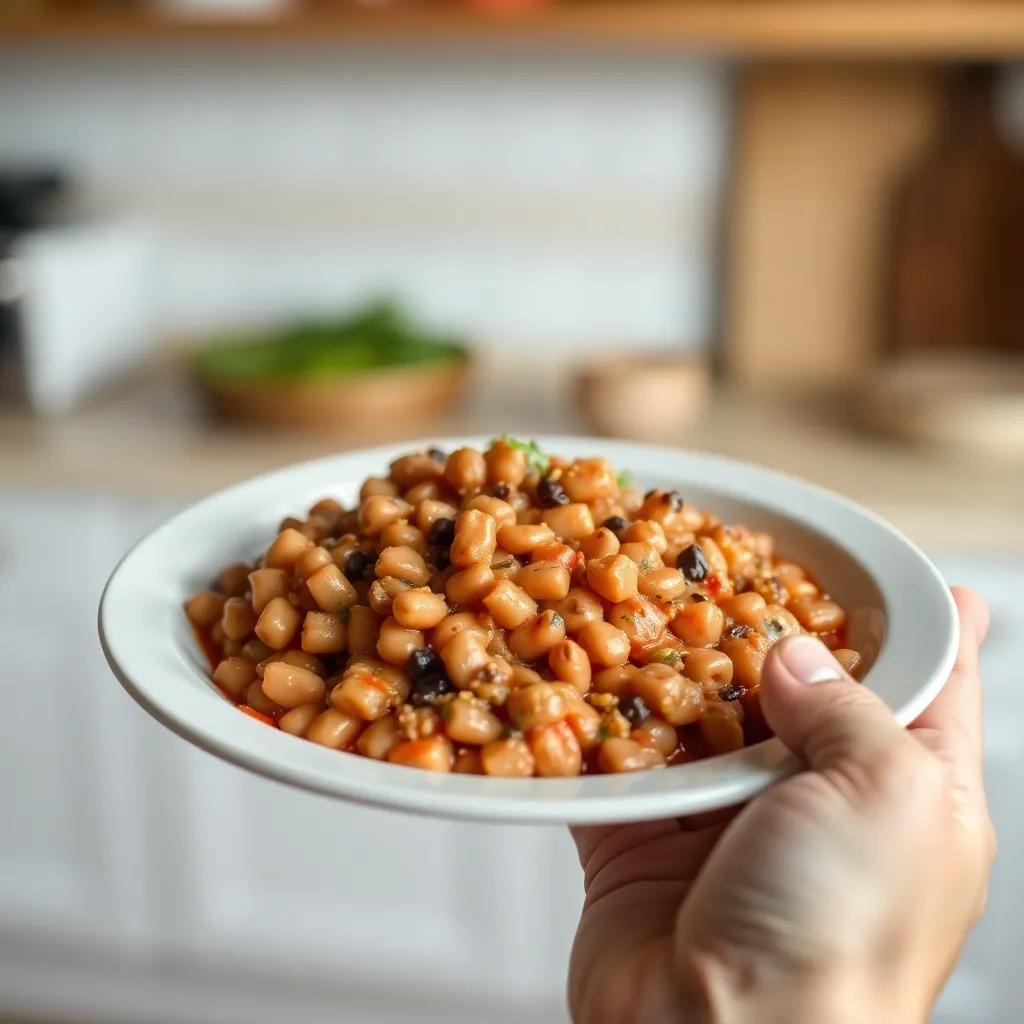
Ingredient Notes
One of the crown jewels of Fabada Asturiana lies in its key ingredients, each carrying its own story and flavor punch essential to crafting an authentic experience.
Fabes (Asturian White Beans): These large, tender white beans are the heart and soul of the stew. Their creamy texture and ability to absorb rich flavors make them irreplaceable in traditional fabada. When shopping, seek out high-quality dried fabes if you can—they’re often labeled as “Fabes de la Granja” or “Fabes de Asturias.” If unavailable, any large white bean such as cannellini or butter beans can work as a substitute, though the texture and taste will be slightly less distinctive. Be sure to soak them overnight to ensure a silky finish without breaking apart during slow cooking.
Chorizo Sausage (Spanish Cured): The smoky, paprika-infused Spanish chorizo infuses the stew with warmth and depth. Its bold spice and fatty richness balance the mildness of the beans. Choose a well-seasoned, cured variety rather than fresh chorizo to achieve the characteristic smoky flavor. If Spanish chorizo is hard to find, look for a dry, smoked sausage with similar seasoning rather than fresh or sweet sausages.
Morcilla (Spanish Blood Sausage): Morcilla brings an earthy, slightly sweet complexity unique to authentic fabada. Made from pork blood, rice, and seasonings, it melts beautifully into the stew, adding body and richness. If you can’t find morcilla, black pudding or blood sausage varieties from local butchers can be suitable alternatives, though flavors may vary.
Sweet Spanish Paprika (Pimentón Dulce): This is the understated hero that ties the whole dish together with its mild smokiness and vibrant red hue. Genuine Spanish paprika—especially from La Vera—is prized for its delicate balance of sweetness and smoke, enhancing the stew without overpowering it. Substitute with a mild smoked paprika if you can’t source Spanish pimentón, but avoid regular hot paprika to maintain fabada’s gentle, rounded flavor.
Each of these ingredients brings authenticity and nuance to Fabada Asturiana. By choosing the right versions and understanding their role, you’ll be one step closer to recreating a stew that honors its Asturian roots and delights your palate with every spoonful.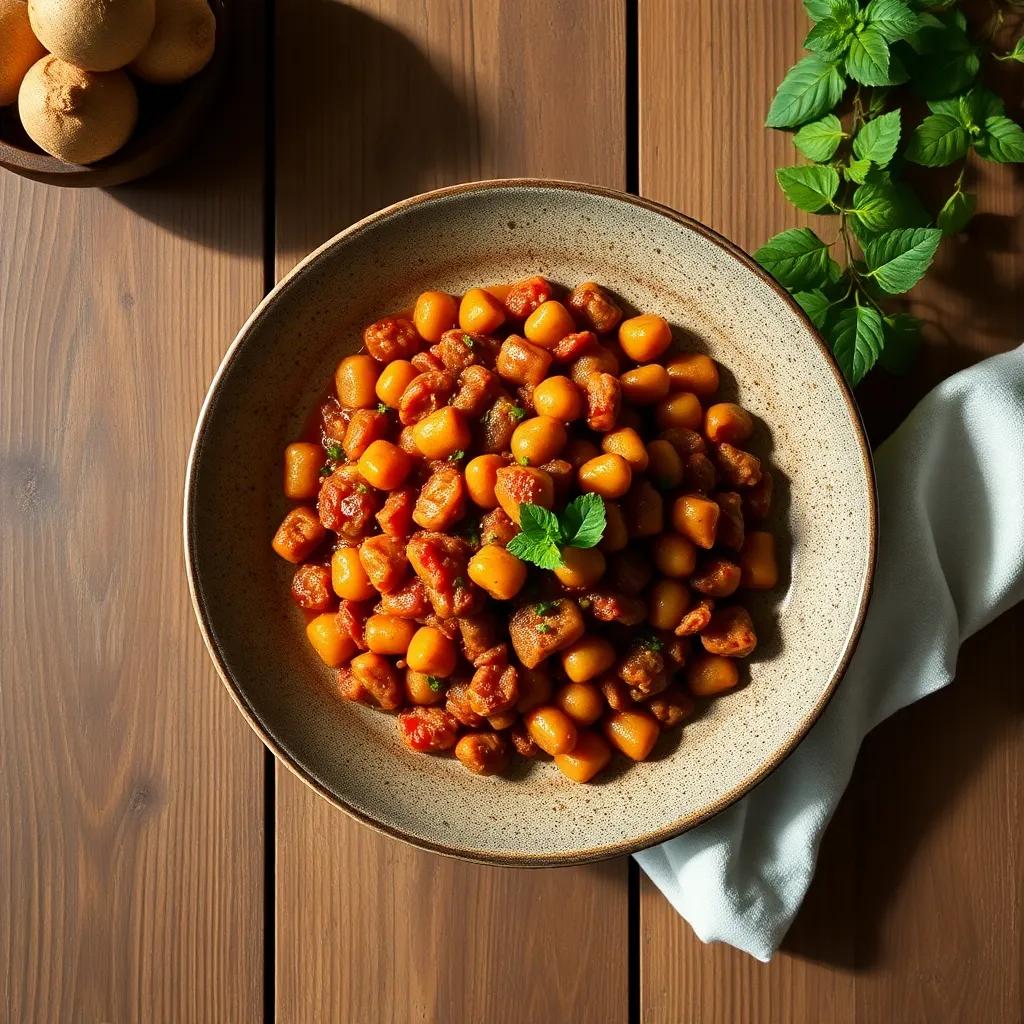
Tips & Variations
Mastering Fabada Asturiana means embracing patience and attention to detail, but with a few insider tips and creative twists, you can elevate this classic stew or adapt it to suit your kitchen and taste buds.
- Soak and Simmer with Care: Always soak your beans overnight to reduce cooking time and ensure an even, creamy texture. When simmering, keep the heat low and avoid vigorous boiling; a gentle bubble will prevent the beans from bursting while allowing flavors to meld beautifully.
- Layer Flavors Gradually: Adding the sautéed onion and garlic partway through cooking preserves their aroma and sweetness without losing them in the long simmer. Consider blooming the paprika in olive oil before mixing it in to intensify its smoky richness.
- Sausage Selection and Preparation: Authentic fabada depends on the trio of chorizo, morcilla, and pancetta. If you want a leaner version, swap pancetta for lean smoked ham hocks or reduce the quantity of cured meats. Removing sausage casings before slicing can help the flavors spread more readily in the stew, though some prefer leaving them intact to keep the meat moist.
- Customizing the Stew:
– Vegetarian/Vegan Adaptation: Omit all meat and incorporate hearty smoked paprika and a splash of liquid smoke or smoked salt to replicate the savory depth. Use vegetable broth instead of water to add richness. For a protein boost, add sautéed mushrooms or smoky tempeh cubes.
– Gluten-Free Friendly: This recipe is naturally gluten-free, but double-check any packaged sausages or seasonings for hidden gluten-containing additives.
– Spice Level: Fabada is traditionally mild, but you can introduce a pinch of smoked cayenne pepper or a few chopped mild chilies if you like a subtle heat.
- Herbs and Aromatics: Though bay leaves are traditional, a sprig of fresh thyme or rosemary can add a fresh herbal note if desired. Just remember to remove woody herbs before serving to avoid overpowering the stew.
- Adjusting Consistency: The stew should be rich but not too thick. If it reduces too much during cooking, add hot water or broth gradually. Conversely, if it’s too watery, remove the lid to encourage gentle evaporation.
- Serving Suggestions Beyond Tradition: Experiment by stirring in a spoonful of tomato paste near the end of cooking for a tangy undertone or finish with a drizzle of good-quality extra virgin olive oil and a squeeze of lemon to brighten the flavors.
- Timing for Best Taste: Fabada Asturiana is even better the next day as the ingredients settle and develop deeper flavor layers. Preparing it a day ahead can make your meal truly unforgettable.
By balancing tradition with thoughtful modifications, you can make Fabada Asturiana your own—whether honoring its Asturian roots or tailoring it to your dietary needs and creative flair.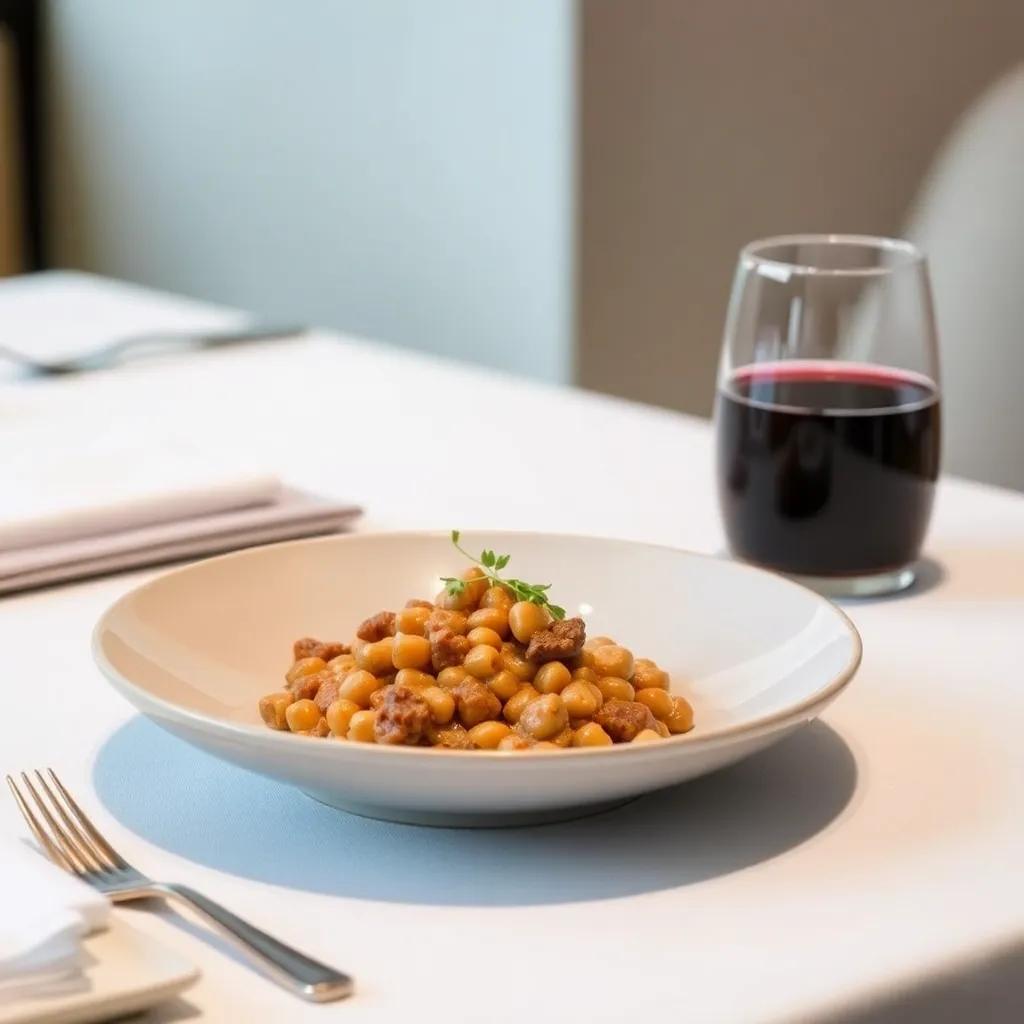
Leftovers & Storage
Storing your leftover Fabada Asturiana properly ensures you can enjoy its comforting richness long after the first satisfying meal. Because this stew is built around tender beans and flavorful cured meats, it holds up well and even deepens in taste after resting.
For short-term storage, transfer the cooled fabada into airtight containers—glass or BPA-free plastic tubs with tight-fitting lids work best to maintain freshness and prevent odors from spreading in the fridge. Keep the stew refrigerated at or below 4°C (39°F). Properly stored, it will remain delicious and safe to eat for up to 3 to 4 days. When reheating, do so gently on the stovetop over low heat or in the microwave, stirring occasionally to ensure even warmth without overcooking the beans.
If you’d like to keep your fabada for longer, it freezes beautifully. Portion the stew into freezer-safe containers or heavy-duty zip-top bags, leaving some space at the top to allow for expansion. Label them with the date, as frozen fabada is best consumed within 2 to 3 months for peak flavor and texture. When thawing, move the stew from freezer to fridge overnight, then reheat slowly, adding a splash of water if the broth has thickened or reduced.
Fabada Asturiana also lends itself well to meal prepping. Its hearty nature means you can cook a large batch ahead of time, portion it out into single or family-sized servings, and have wholesome, ready-to-eat meals waiting in the fridge or freezer. This makes it an ideal recipe for busy weeks or to bring along for a warming office lunch. Just be sure to cool the stew completely before sealing and storing to keep the quality intact.
Keep in mind that because of the cured meats, it’s advisable not to store the stew at room temperature for extended periods, as this can encourage spoilage. Always prioritize quick cooling after serving and consistent refrigeration.
With these storage tips, your Fabada Asturiana will remain a satisfying, soul-warming dish that’s ready to comfort you again and again.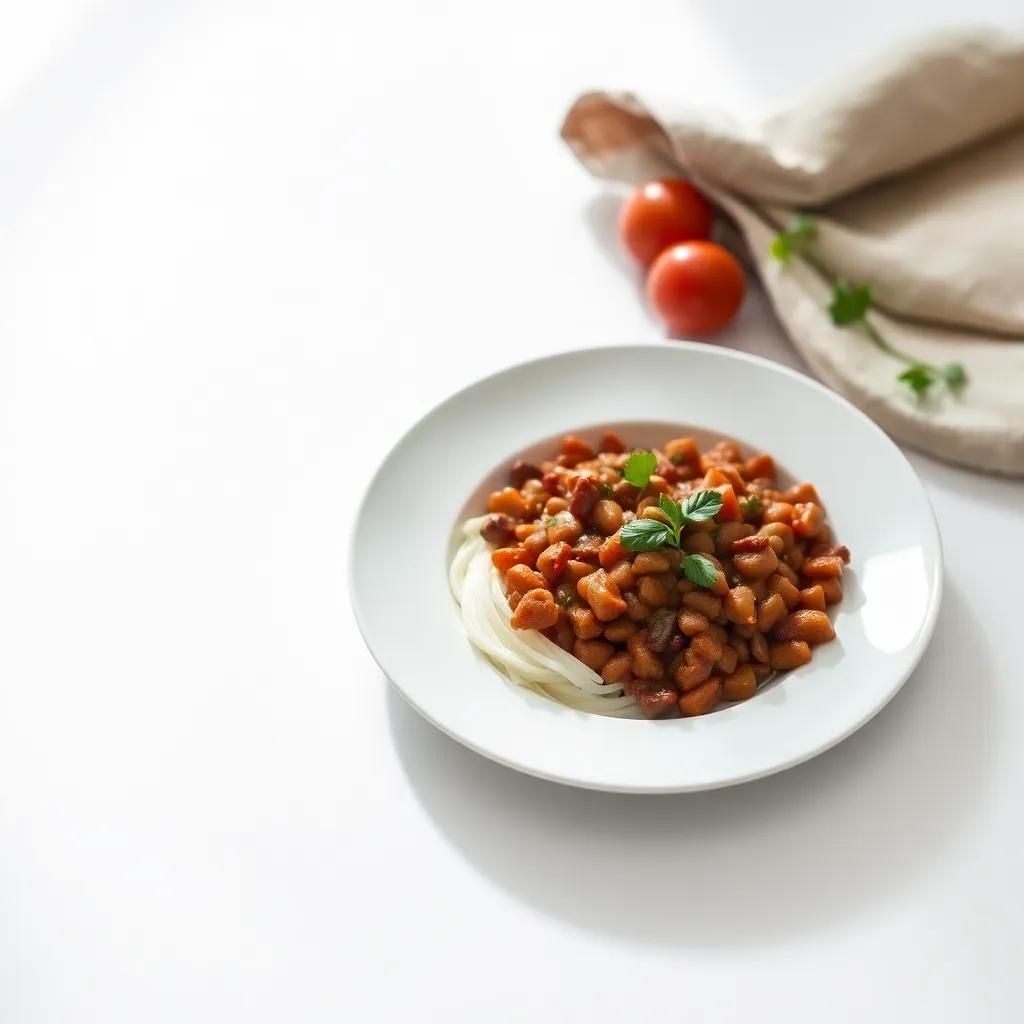
Behind the Recipe
Fabada Asturiana is much more than a traditional bean stew—it is a culinary emblem of Asturias, the rugged, green region in northern Spain where hearty fare is a way of life. This dish carries the spirit of a land where long winters and hard work called for meals that would warm the body and nourish the soul. Rooted in humble peasant origins, Fabada was originally made to sustain shepherds and laborers with simple, accessible ingredients like local beans, cured pork products, and smoky paprika.
The beauty of Fabada lies in its slow, gentle cooking that transforms basic elements into a rich, deeply layered stew. Each ingredient tells a story: the fabes beans—renowned for their creamy texture—are a prized crop of Asturias and considered essential to authenticity. Chorizo and morcilla, the iconic Spanish sausages, contribute smoky, savory notes that reflect centuries of curing traditions passed down through generations. Pancetta or smoked bacon adds a subtle richness reminiscent of Asturian farm kitchens where nothing went to waste.
For locals, Fabada is more than food; it is an expression of community and celebration. It is often enjoyed during festive occasions like winter holidays or family reunions, served alongside local sidra (cider), a beloved regional drink that complements the stew’s intense flavor. Many Asturians believe Fabada tastes even better the next day, when the flavors have had time to mingle—a testament to the patience and care invested in its preparation.
On a personal note, home cooks often share memories of gathering around a warm hearth, the aroma of simmering beans filling the house, signaling comfort and togetherness. Making Fabada can be a mindful ritual, inviting a pace of cooking and eating that honors tradition and connection. Whether you discover this recipe on a chilly evening or as a weekend project, you’re tapping into a rich culinary heritage that invites you to slow down, savor, and share.
By embracing Fabada Asturiana, you’re not just cooking a stew—you’re stepping into a story of place, purpose, and passion, served one hearty spoonful at a time.
FAQ
Can I make Fabada Asturiana vegetarian or vegan?
What’s the best way to store and reheat leftovers?
Can I use canned beans instead of dried beans?
Is there a way to speed up the cooking time?
What sausages can I use if I can’t find traditional Spanish chorizo?
Can I prepare Fabada Asturiana ahead of time?
Your Turn in the Kitchen
There’s something truly comforting about Fabada Asturiana—a rich, hearty stew that brings a taste of Spain’s northern heartland to your table. Its blend of tender beans, smoky chorizo, and savory pork creates a meal that’s as satisfying as it is authentic, perfect for sharing with loved ones or savoring on a cozy evening in.
If you decide to give this classic recipe a try, we’d love to hear how it turns out! Feel free to leave a comment, rate the dish, or share any special twists you add to make it your own. After all, food is best when it’s shared and celebrated together!











